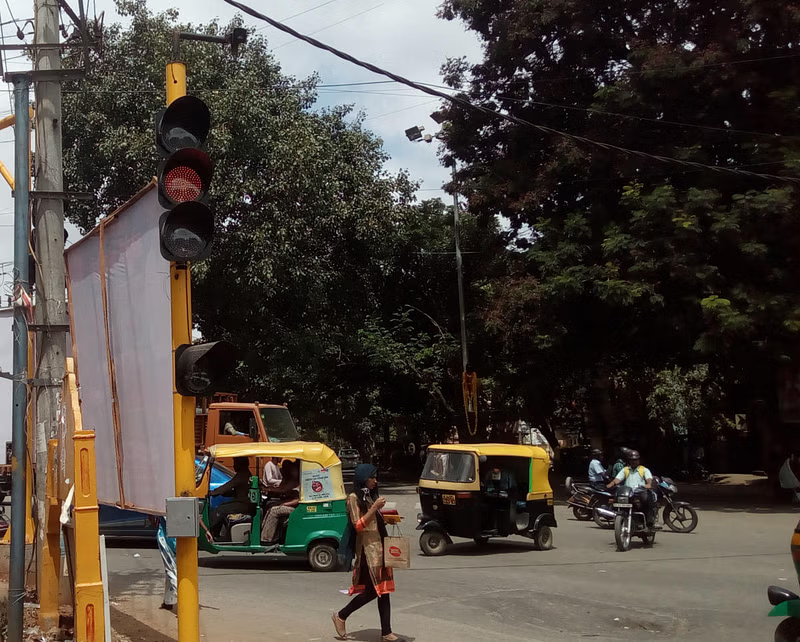Residents Demand Action on Bengaluru Shanthi Layout Risky Crossing
The residents of Shanthi Layout, an area in Bengaluru, continue to face severe safety risks at a traffic junction near the Junjappa Swamy Temple. The long-standing demand for road humps and traffic signals has gone unaddressed, despite multiple petitions and requests from local residents and public safety advocates. The situation has become especially hazardous for pedestrians, including school children, who struggle to cross the road during peak hours. With no immediate relief in sight, residents are growing increasingly frustrated by the inaction of the Bengaluru Traffic Police (BTP) and the Bruhat Bengaluru Mahanagara Palike (BBMP).
The issue was initially flagged when the Traffic Police Inspector of Chikkabanavara Traffic Police Station wrote to the BBMP Traffic Engineering Cell in July 2024, urging the installation of road humps and traffic signals. However, this letter appears to have been the only official communication on the matter. Despite the importance of the issue, residents have yet to see any tangible results. The lack of urgency in addressing the safety concerns of pedestrians and motorists alike has caused an increase in road accidents, further exacerbating the safety hazard.
Ajay Merchant, a concerned resident, has expressed his disappointment with the slow-moving process, highlighting that the delays violate the fundamental right to life and personal safety as guaranteed under Article 21 of the Indian Constitution. “The lack of action from the BBMP and the BTP has led to numerous accidents, endangering lives. The negligence from these authorities puts citizens at grave risk,” Merchant said, echoing a sentiment shared by many others in the community. He also pointed out that both the Supreme Court of India and the Karnataka High Court have repeatedly emphasised the importance of road safety, urging state governments to ensure adequate infrastructure.
Amrutha Gangadhar, another resident, raised concerns over the absence of road humps and signals, especially for pedestrians. “Without these basic road safety measures, the junction is a major threat to our children and elderly. Installing traffic signals and road humps would reduce accidents and make this area safer,” she said. Likewise, Surya Nayak, a local resident, added, “Pedestrians have to brave heavy traffic to cross this junction, especially during rush hours. The lack of safety infrastructure makes the situation even more dangerous.”
From a broader civic perspective, the delay in installing road safety infrastructure at Shanthi Layout is part of a much larger urban planning issue facing Bengaluru. Despite being one of India’s fastest-growing cities, Bengaluru continues to struggle with road safety concerns, especially in high-traffic areas. The city has seen a rapid increase in vehicular numbers, and with it, the risk to pedestrians and cyclists. In this context, ensuring timely installation of safety features like road humps and traffic signals is not just a local issue but a wider urban challenge that requires immediate attention from the city’s civic authorities.
Addressing road safety concerns is also directly linked to sustainability goals for urban mobility. Inadequate infrastructure not only leads to more accidents but also contributes to increased fuel consumption and pollution due to traffic bottlenecks. By implementing road humps and efficient traffic signals, cities like Bengaluru can reduce congestion, lower emissions, and create safer spaces for pedestrians—thus aligning with broader environmental and social sustainability goals. In this light, the ongoing inaction at Shanthi Layout’s junction presents a missed opportunity for creating a safer and more sustainable urban environment.




